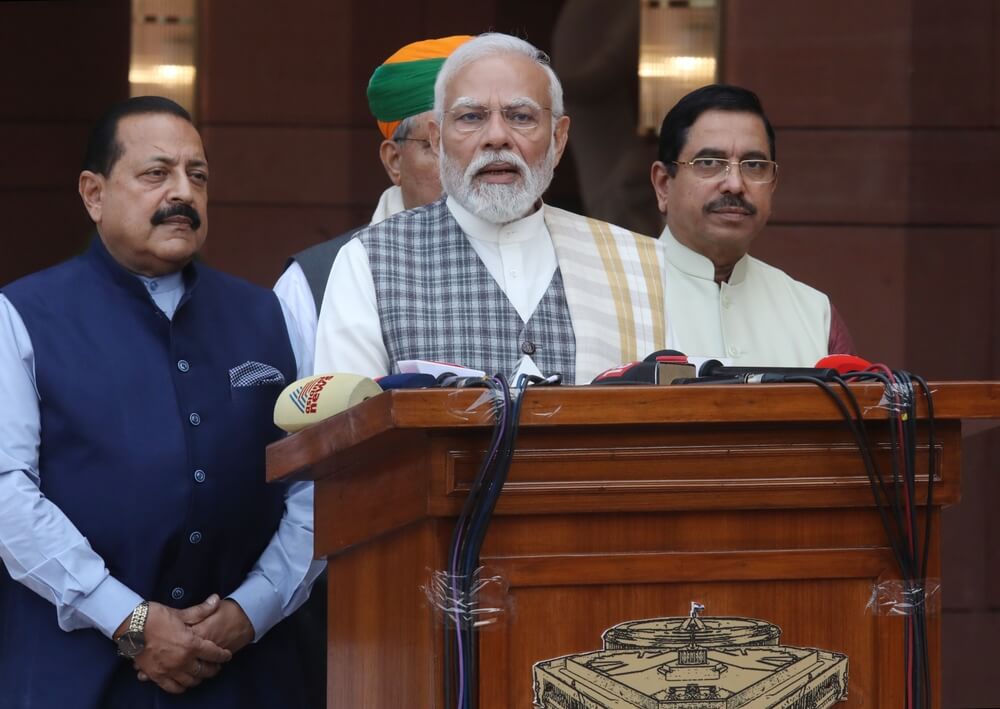The crisis in the Red Sea region is an opportunity for India to step out of its traditional neutrality regarding global hotspots and assume a more active geopolitical role.
The most populous country has successfully refrained from aligning with polarised blocs and has carefully balanced its position in numerous crises. India seems to be the only country that could afford a similar position today.
However, its proclaimed sovereignty in choosing the foreign policy path is not without limitations. Regional crises, such as the one in the Red Sea, threaten its strategic economic and political interests.
The attacks on merchant ships by the pro-Iranian Houthi militia in Yemen, which have been ongoing for almost 3 months, have threatened one of the most significant trade corridors for the Indian economy.
About 80% of India's exports to Europe pass through the Red Sea and the Suez Canal, which have become a target due to Houthi attacks and the reason why carriers have been choosing to take a detour around Africa.
This regards about $14 billion per month of Indian exports, forced to extend the journey to European customers by 2 to 3 weeks.
Half of India's export market of $220 billion is located in the regions where goods are delivered via the Red Sea and Suez Canal - Europe, North America, Middle East and North Africa.
Also, this is the corridor through which a third of India's total imports come.
Increased presence of the Navy in the crisis zone
Disruption on such a significant trade route is a fact that requires a decisive response from India, including a military one.
However, India did not join the US and UK-led Operation Prosperity Guardian in a military response to Houthi attacks on merchant ships.
That step is still too much for the government in New Delhi for now. But can the hesitation last indefinitely?
Since the outbreak of the crisis, India has deployed a large naval force, totalling more than 20 warships in the Gulf of Aden and the West Arabian Sea
India has chosen to cooperate with the US-led mission in the Red Sea region through the massive presence of its Navy.
Since the outbreak of the crisis, India has deployed a large naval force, totalling more than 20 warships in the Gulf of Aden and the West Arabian Sea, to support the US and UK-led coalition without directly participating in their attacks on Houthi positions in Yemen from where the attacks on merchant ships originate.
Indian forces have increased their anti-piracy missions in the risk zone, so since last December, they have been the first responders in around 20 attempted ship hijackings.
The strong presence of the Indian Navy in the crisis region has led to its members being the first to come to the aid of ships and crews attacked by Houthi missiles or free the crews of ships hijacked by pirates.
Limited military action
Since the Red Sea crisis started in late November, the Indian Navy has demonstrated resilience and determination to respond.
The Indian government clearly wants to maintain this level of engagement in one of the world's most explosive hotspots, and it has understanding from Western actors.
PM Narendra Modi's government feels capable enough to handle the pressure the domestic economy has suffered due to the disruption of its principal transport corridor.
However, the Red Sea region crisis has put India to the test of whether it is ready to take on the geopolitical obligations that arise from its indisputably significant global influence.
The caution with which India has been handling the crisis in the Red Sea region stems from its relations with Iran as a significant regional and economic partner
“We will not be considered a responsible country when bad things are happening in the surrounding country and we say ‘I have nothing to do with this’”, said S. Jaishankar, India's foreign minister.
The caution with which India has been handling the crisis in the Red Sea region stems from its relations with Iran as a significant regional and economic partner.
However, the recent visit of Minister Jaishankar to Tehran showed that India did not hesitate to raise the issue that the Iranian proxy Houthis have been causing in the Red Sea region despite the strong economic partnership.
Pressure on Iran
Given India's strong support for Israel in countering Hamas terrorism, its cooperation with Iran positions it as a crucial factor that could curb Tehran's destructive actions in the Middle East.
This is an influential position that India wants to preserve, which is why it has been acting cautiously on several fronts, including the Red Sea crisis as the most explosive.
 PM Modi's expected new term will be a period in which India will be under pressure to assert its increasing economic and political global influence through more significant participation in security operations
PM Modi's expected new term will be a period in which India will be under pressure to assert its increasing economic and political global influence through more significant participation in security operations
Its reluctance to join the military actions against the Houthis, led by the US and the UK, has been partly the result of the pre-election atmosphere in India, given that PM Modi, who has the best chance for a new mandate, does not want to risk his leadership on the international stage with military action.
His expected new term, however, will be a period in which India will be under pressure to assert its increasing economic and political global influence through more significant participation in security operations.
The experience with disruptions due to the crisis in the Red Sea puts India in a position to confirm its participation in global leadership and its readiness to react decisively using the military against direct threats to its economic and political expansion.